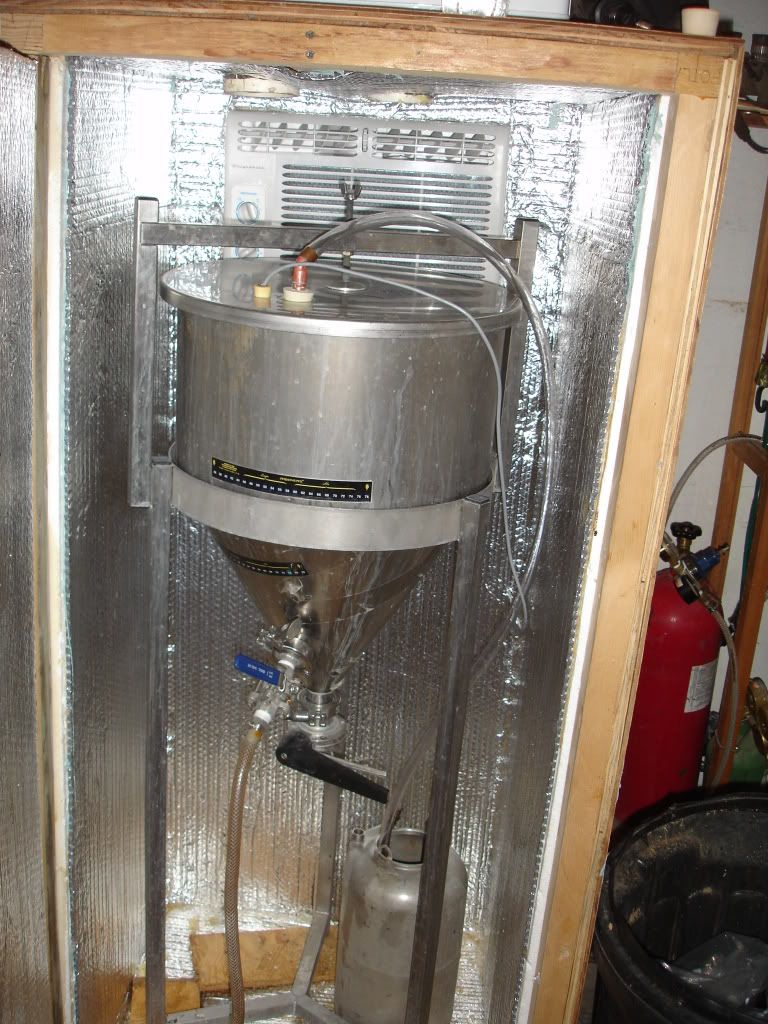Sorry guys, I've been meaning to post back for a while but I am smack in the middle of preparing to move to CO for grad school!!!
Here are the Cliff's notes...
4-10 Brew A was fermented in the 5 gal Better Bottle carboy. It was under temp control at 68* for 5 days, was moved to an un-airconditioned room for 2 days but the temps here in Texas climbed into the 90's and I wasn't interested in ruining 4.5 gal of beer! Beer temp never got higher than 78*. So I moved it into the A/C cooled bedroom closet and set the t-stat to 75* for the remainder of the fermentation period (21 days total).
Brew B was fermented in a 6.5 gal bucket and maintained at 68* for the entire 21 days in a fridge with a Johnson A419 digital temp controller.
4-20 First comparison on bottling day...
Both beers look the same as expected.
A-more pronounced bitterness, B-seems cleaner and smoother
Placed all bottled beers in the same warm room (the original fermentation room that got too hot).
5-4
A-almost flat. Still tastes fairly green and bitter
B-decent carbonation (though by no means fully carbed) and lacing. Tastes less green than A and bitterness is less harsh. Head is thin but persistent. Color and clarity is the same.
5-22
Father-in-law and I did a side by side comparison. These beers are now VERY similar but there are differences. Both pour into snifters with a 3" tight white head. Beautiful golden caramel color. Distinctively Belgian in character but the 550 throws more spicy phenols than fruity esters. Very digestable

A- head dissipates much quicker and to just a trace of white on the surface. Can be revived to a 1/4" with a swirl but quickly disappears again. Both of us perceived more bitterness in this beer than in B. No lacing.
B- head dissipates to a 1/4-1/2" which persists. Decent lacing on glass. Taste is clean and smooth. Bitterness supports the Belgian funk from the 550 rather than clashing with it as A does a little.
I expected that the increase in temp would have resulted in a lower FG in A, but it was actually a point higher than B. I was also surprised by how much longer A took to carb up than B. Head retention is clearly better in B and A is perceived as more bitter and a little harsher. That said, unless you are drinking them side by side and looking for differences, it would be hard to tell these two apart.
This experiment was enough to show me that if at all possible, I want my brews under temp control through the entire process. This resulted in a better beer that required less conditioning to reach its full potential. The beer was smoother than its counterpart, carbed faster, and has better lacing and head retention. Both are damn fine beers






